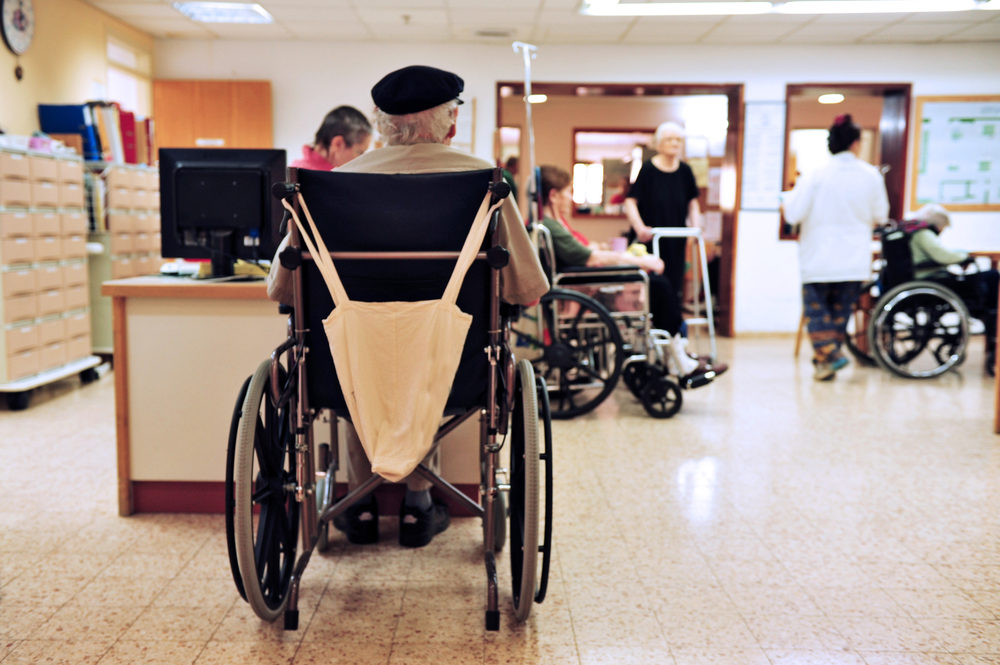Study Finds Staffing Levels, Not Ownership, Main Factor In Nursing Home COVID-19 Outbreaks
While private equity owned nursing homes have been linked to higher resident hospitalization rates, a new study finds residents of poorly staffed nursing homes in economically deprived communities have the highest fatality risks.

Following a series of nursing home reforms proposed by the White House, which call for better staffing and compliance monitoring, new research highlights the increased rates of resident mortality linked to understaffed nursing homes throughout the height of the COVID-19 pandemic.
In a study published this month in The Journal of the American Geriatrics Society (AGS), researchers found that staffing shortages at nursing homes and assisted living facilities was one of the top contributing factors associated with COVID-19 cases and deaths between January 1, 2020 and June 15, 2021.
With more than 1.4 million residents in over 15,500 Medicare and Medicaid-certified nursing homes throughout the United States, significant attention has been placed on nursing home neglect incidents caused by understaffing, staffing turnover rates and lack of infectious disease protocols throughout the course of the COVID-19 pandemic.

Did You Know?
Millions of Philips CPAP Machines Recalled
Philips DreamStation, CPAP and BiPAP machines sold in recent years may pose a risk of cancer, lung damage and other injuries.
Learn MoreThe team of researchers reviewed 36 empirical studies of factors associated with COVID-19 cases and deaths reported in long term care facilities, including nursing homes and assisted living communities.
According to the review, nursing homes with staffing shortages, multiple residents per room and those in declared COVID-19 hotspots were among the most impacted facilities. Specifically, the researchers found that facilities with a higher proportion of Black and Hispanic residents had consistently higher rates of adverse outcomes.
No major difference was found between CMS’s Nursing Home Compare 5-star ratings and adverse outcomes, the review identified nursing homes with more CNAs and total nurse staffing had fewer cases and deaths, while those who reported staffing shortages increased the risk of fatality rates.
While the study does indicate larger nursing homes with overall higher staffing rates were found to have higher rates of COVID-19 outbreaks, the authors specifically note these facilities also ranked lowest in COVID-19 related nursing home resident deaths.
The researchers state “conditional on having any outbreak, nursing homes with more CNAs and total nurse staffing had fewer cases and deaths”
Although the findings suggest private equity owned nursing homes did not significantly impact patient outcomes, previous studies have suggested many private equity owned nursing homes offer lower quality of care than other for-profit care facilities. Studies have identified residents of private equity-owned nursing homes are 11% more likely to have emergency room visits and nearly 9% more likely to be hospitalized.
Nursing Home Understaffing Problems
Following scrutiny by legislators and the public over the ability of nursing homes to protect the nation’s most vulnerable population during the COVID-19 pandemic, the White House issued a press release late last month, outlining a series of nursing home reforms designed to address the failures of underperforming and understaffed nursing homes, which have a history of providing substandard care that often results in patient harm.
In the nursing home reform agenda, the administration indicated that Medicare & Medicaid Services (CMS) certified nursing homes would be required to set minimum staffing levels, reduce room sharing and halt tax-payer funding to poor-performing nursing homes to incentivize better patient care standards.
Additionally, to further address nursing home understaffing issues and high nursing home turnover rates caused by overwhelming workloads, the plan would require CMS to conduct new research to determine the appropriate level and type of staffing for patient populations within one year before setting a standard.
Prior research has shown nursing home residents are more likely to receive poor care when facilities are understaffed, leaving them prone to suffering from bed sores, falls, fractures and other forms of nursing home injuries when staff at a facility are stretched thin.
The results of a nursing home understaffing survey were released by The American Health Care Association (AHCA) and National Center for Assisted Living (NCAL) in July 2021, finding 94% of nursing home facilities and 81% of assisted living facilities saw staffing shortages within the last month, while nearly 60% of both types of facilities reported having critical staff such as CNA’s or direct caregivers quit within the last month.
Get more articles like this sent directly to your inbox.
"*" indicates required fields





0 Comments